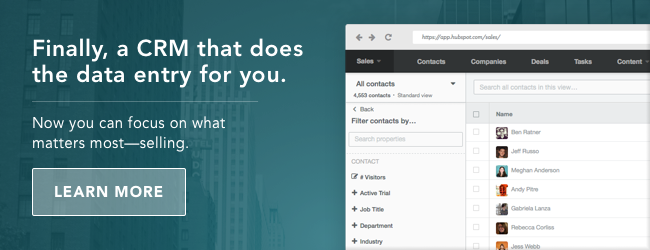

Four years ago, Brent Adamson and Matthew Dixon penned The Challenger Sale, which posited that all salespeople fit into one of five profiles and that the “challenger” profile was the most successful.
Now, Adamson and Dixon are back to explore the person on the other side of the selling process -- the customer. Adamson announced at InsideSales.com's virtual Sales Acceleration Summit 2015 that later this year, he and Dixon will publish a new book titled The Challenger Customer.
According to new research from CEB, the advisory group where Adamson and Dixon are directors, there are now an average of 5.4 different people involved in each B2B purchasing decision. Adamson called the statistic “a rallying cry for how difficult it is to sell in today’s buying environment.”
These stakeholders typically aren’t from the same department, either. Decision makers come from a variety of different teams, which means that they have different priorities. And divergent needs make it far harder for all stakeholders to reach a consensus.
So what’s the solution for account-based sales? It might seem the best way to convince five stakeholders with different organizational perspectives and “mental models” -- Adamson’s term for a buyer’s approach to purchasing decisions -- is to tailor your pitch to each decision maker.
However, CEB’s findings don’t support this assumption. According to the firm's data, if a salesperson's ability to position an offering to an individual decision maker improves from below average to above average, they are 4% less likely to close a high-quality sale.
That’s right -- 4% less likely.
“The better we get at positioning, the worse the deal becomes,” Adamson said. “What it doesn’t mean is that tailoring is a bad idea. What it does mean is that we have to be very precise about what tailoring means to get it right, [and] to avoid the damage of getting it wrong.”
Differing perspectives also mean that the 5.4 stakeholders probably won’t agree on very much except avoiding risk, reducing disruption, moving cautiously, and saving money, Adamson said. Enough divergence among stakeholders, and deals may be lost entirely.
If getting salespeople to position deals to individual decision makers isn’t the answer, another tactic is needed, and Adamson and Dixon think they have the answer.
“What we really need to do is do a better job of connecting individual stakeholders to each other,” Adamson said. “We need someone inside the customer organization to help get that done.”
The Challenger Customer will introduce seven types of customer stakeholders and discuss how salespeople should handle each. Here’s a preview of the customer types:
- The Go-Getter: Looks for new and innovative ideas
- The Skeptic: Moves slowly and cautiously, and tears every idea apart
- The Friend: Enjoys spending time building relationships, and is happy to share information
- The Teacher: Always looking for the next big idea, but is not the best project manager
- The Guide: An oversharer
- The Climber: Self-interested and willing to step on others to get what they want
- The Blocker: Doesn’t want to talk to people outside the company, and is happy with the status quo
The key is to find a “challenger customer,” or someone who will act within their company as a challenger salesperson would act in a buying process. According to Adamson, the most effective salespeople spend their time building relationships with three of these seven types -- but we’ll have to wait until The Challenger Customer hits the shelves to find out which three.
